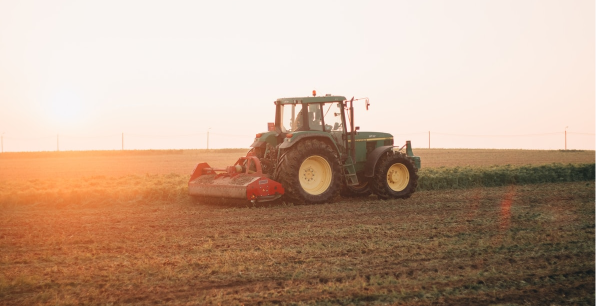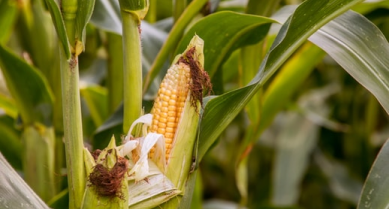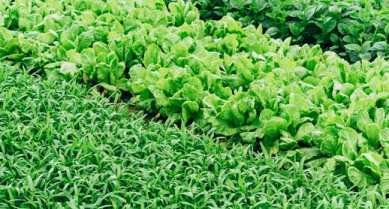Agrimetrics showcases new developer portal to tackle big questions in agriculture
New Developer Portal will allow programmers access to national agri-food data, ordered in a consistent format so that multiple sources of information can be brought together in new ways.

Simon Davis, Head of Partnerships for Agrimetrics
Each type of visual aid has pros and cons that must be evaluated to ensure it will be beneficial to the overall presentation. Before incorporating visual aids into speeches, the speaker should understand that if used incorrectly, the visual will not be an aid, but a distraction.
Planning ahead is important when using visual aids. It is necessary to choose a visual aid that is appropriate for the material and audience. The purpose of the visual aid is to enhance the presentation. Each type of visual aid has pros and cons that must be evaluated to ensure it will be beneficial to the overall presentation. Before incorporating visual aids into speeches, the speaker should understand that if used incorrectly, the visual will not be an aid, but a distraction. Planning ahead is important when using visual aids. It is necessary to choose a visual aid that is appropriate for the material and audience. The purpose of the visual aid is to enhance the presentation.
Simon Davis, Head of Partnerships for Agrimetrics, the big-data centre of excellence, explains: “The UK has a rich legacy of data, not just about soil, weather and crop performance but also about ecosystem services provided by natural capital – for example environmental assessments and water catchment studies. Until now the value of this data has been limited as it is kept isolated in silos. Agrimetrics has developed a platform that can integrate these various datasets from multiple sources, making it available to developers to ‘plug and play’. This will allow agri-food data to be analysed in ways not possible before, and new solutions developed.”
The falling cost of sensors and imaging technology is making it easier for farmers to collect information about their own crops and growing conditions, but this data really becomes useful if it is combined to enable better benchmarking of performance against others. The new insights generated can also be used to enhance decision-making on productivity and sustainable best practice.
The Agrimetrics platform supports this type of analysis by linking national and international datasets from different public and private sources to a specific reference point, for example a location, field or a parish.
The new Developer Portal provides tools so that programmers can easily incorporate a wealth of relevant data into their own applications. This could be a dashboard that allows non-specialists to easily compare different scenarios or a handheld device that supports decision-making in the field. Agrimetrics will be demonstrating at REAP two examples of how this can be achieved.

The Natural Capital Explorer is a dashboard developed with data from Defra and the Developer Portal. It brings together various indicators of the national ecosystem and applies them at parish level. This enables the ecosystem services and the impact on the environment provided by, for example, woodland, fens, and cover crops to be assessed objectively at a local level.
The information is displayed graphically so that different parishes can be compared and implications of a change in land-use can be explored more effectively. Davis explains that the dashboard has many applications, from mapping information across value-chains, to displaying data from different government sources to make integrated decisions about land use and environmental management.
The other application is Agrimetrics Data Combine, a web-based tool that provides support to decision making on crop varietal choice. The application provides benchmark information to users on the performance of alternative varieties in similar environmental conditions. It is based on data provided by farmers in exchange for the benchmark.
By crowd-sourcing data, and combining it with data held in the portal, Agrimetrics is creating a comprehensive record on varietal performance in real-world conditions.
Agrimetrics was established as part of the Government’s Agri-Tech Strategy to add value to public data sets and provide the tools for its exploitation. The platform brings together data and makes it available in a consistent format so that it is ready to be analysed and used.
Agrimetrics is exhibiting at REAP on 7 November 2017, and would like to invite those interested in beta-testing the Developer Portal to visit the stand to talk about the data services they require.
Other articles that might interest you

AI identifies crops from space with 90% accuracy
Agrimetrics launches CropLens AI, a proprietary algorithm that identifies crop types from space.

ClearSky: Cloud free satellite data for agriculture
ClearSky's artificial intelligence removes a major barrier to the efficacy of satellite

ClearSky: Cloud free satellite data for agriculture
ClearSky's artificial intelligence removes a major barrier to the efficacy of satellite

Agrimetrics partners with Airbus to reduce cost
Crop Analytics, a crop and field analytics package from Airbus, is now available at a new, lower price.



